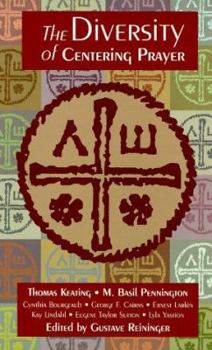Diversity of Centering Prayer
This text relates to the practice of Centering Prayer - which involves the daily practice of meditative prayer to enhance one's spiritual life - to different religious practices and the various conceptual backgrounds out of which Centering Prayer has arisen. It explores the historical aspects of Centering Prayer and the Christian contemplative tradition and how Centering Prayer has been used with other disciplines, such as psychology. The contributors to this volume in the Centering Prayer series are Cynthia Bourgeault, George F. Cairns, Thomas Keating OCSO, Ernest E. Larkin OCarm, Kay Lindahl, M. Basil Pennington OCSO, Gustave Reininger, Eugene Taylor Sutton, and Lyla Yastion.
Format:Paperback
Language:English
ISBN:0826411150
ISBN13:9780826411150
Release Date:September 1999
Publisher:Bloomsbury Academic
Length:142 Pages
Weight:0.44 lbs.
Dimensions:0.4" x 5.4" x 8.2"
Customer Reviews
2 ratings
The centre of things
Published by Thriftbooks.com User , 18 years ago
In the introduction, Gustave Reininger states, `In a collaboration between lay spirituality and the ancient monastic traditions, Centering Prayer has evolved into a living testament to Thomas Merton's call for the contemplative dimension in an active life.' Centering Prayer has become a popular item for churches, Sunday schools, prayer groups and private practices for individuals. But what is Centering Prayer and how does one do it? The first essay by Fr. Basil Pennington sets the idea of Centering Prayer in both its historical and its present context. The idea of Centering Prayer is at least as old as Jesus' own instructions to his disciples; as Jesus continued traditions he received, it makes his instructions for prayer even older. Pennington also connects the early church fathers, medieval mystics, and modern prayer practitioners to the practice of Centering Prayer. Other essays look at specific practices, contexts, and personal reflections. Thomas Keating has both an essay and an appendix in which he discusses particular practices that can be used by the readers of this volume, as well as encouragement for those who find the practice difficult at first. This is an exercise in spiritual attentiveness, different in many ways but nonetheless related to other contemplative practices such as meditation, and like those other forms, the practitioner may find things more rewarding over time. The word diversity in the title has a different meaning than is often used in political or church contexts today. `The topic of diversity is meant to demonstrate the broad range of experience and insight into the practice and conceptual background of Centering Prayer within the Christian contemplative tradition.' Some essays look at the use of Centering Prayer in different settings, such as the African-American community, small groups, or an ecumenical seminary. Each presents unique challenges and focal points that can be instructive to readers contemplating their own practices. This is both a book about Centering Prayer as well as a book on how to do Centering Prayer. It is written less for the absolute beginner and more for someone with some background in spiritual practices, religious discourse and theology in mind. Still, it can used productively by a wide range of people, and most especially for those who are considering setting up a class or group in their church or community.
Bridge from New Age meditation- to centering prayer
Published by Thriftbooks.com User , 25 years ago
By reading a variety of perspectives, by different writers if different backgrounds the reader sees the "diversity" of centering prayer. It is not for a select group of people or religious tradition. We are more alike than we are different.





